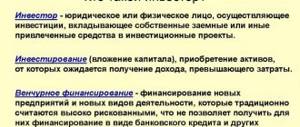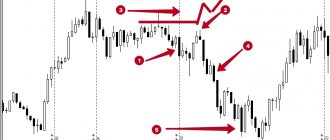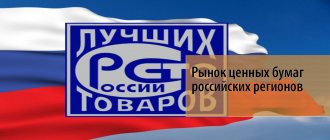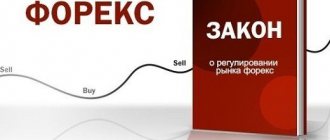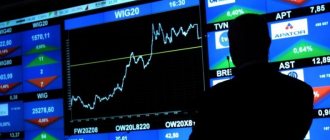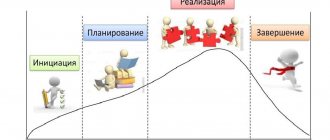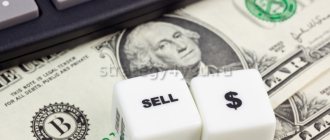Hello, fellow traders! We all know that Forex is an interbank, decentralized market, practically unregulated by anyone. But how does everything really work? In this material we will go over the main aspects: market participants, sources of quotes, why Forex became available to mere mortals, we will analyze the models of brokers and what we should do about it.
How does the Forex market work?
Principles of operation of the Forex currency exchange
The term Forex itself is an abbreviation of the English phrase Foreign Exchange, which translates as “foreign exchange”. It is sometimes shortened to "FX".
Forex is a system of strong economic and organizational relationships that arise during operations involving the movement of capital of foreign investors, as well as during sales or purchase transactions:
- currencies of different countries;
- payment documents in foreign currency.
These are the main trading tools that are inherent in the Forex market. However, modern trading platforms and programs offer an even greater selection of trading instruments.
Today on the foreign exchange market you can find, in addition to the already mentioned currencies: precious metals, futures, raw materials, as well as cryptocurrency.
However, these trading relations are very different from the main currency market, where the central banks of different countries rule, and where it is much more difficult to get into. But first things first.
Let's look at the basic principles of the Forex market, which anyone can access.
Historical information! Exchange relations have been developing for quite some time. Since about the middle of the 20th century, when the world practiced trade transactions of the “forward” type (forward transactions with currency) and “spot” (with immediate delivery of currency). However, the start of the Forex exchange can be considered the beginning of the 70s, namely August 15, 1971. On this day, US President Richard Nixon made a statement that his country was withdrawing from the Bretton Woods agreements and the world had switched to the Jamaican currency system - when the exchange rate is set not by the state, but by the free market.
Accordingly, the value of the dollar was no longer backed by gold, and world currencies were no longer backed by the dollar itself.
The popularity of the Forex market among investors and speculators is due to many reasons, the main of which are:
- Price formation. The value of each trading asset is formed uncontrollably (spontaneously). It depends on the current supply and demand in the market, the general economic situation among the community of traders. Global cataclysms, man-made disasters, floods, hurricanes, earthquakes, etc. — all these factors can affect the foreign exchange market.
- Liquidity of investments. Forex is considered a fairly liquid market. If you sell any assets, you can always be sure that there will be a buyer for them. Market Makers are called upon to provide liquidity.
- Immediate transaction. The huge number of players within the system makes it high-speed, agile and very flexible. Orders to close or open are processed literally in a matter of seconds.
- The exchange operates 24/7. Officially, the Forex market operates 5 days a week. However, time zone shifts and the presence of several global exchanges make it possible to trade some instruments seven days a week.
- Leverage. The exchange provides so-called “leverage” to all traders. It allows you to get better financial returns with a relatively small down payment (deposit). However, high leverage can burn through your deposit faster.
Fact! The Forex market can have a negative impact on the country's economy. Especially if the experts have little understanding of current market conditions. For example, the Central Bank of the Russian Federation lost $23.3 billion on the stock exchange for the period from April 2021 to April 2019.
Having understood the basic principles, let's move on to the market diagram itself.
Brief history
In the history of Forex, two key points can be distinguished:
1. Surprisingly, Forex appeared relatively recently, officially in 1976 after the introduction of a new international monetary system. In fact, this market is only 43 years old at the time of writing. By comparison, stock trading in America and the founding of AMEX date back to 1911, while the oldest stock exchange in Amsterdam dates back to the 17th century.
2. Why did currency trading appear much later? This is due to the gold standard. Previously, each monetary unit of any country in the world was backed by a certain share of the precious metal. If necessary, the currency could be exchanged for the corresponding amount of gold. Gradually, this system was abolished, finally this happened in 1976 at the Jamaican IMF conference and the founding of the free forex market.
Many ordinary people still continue to believe in a certain gold standard and other things. A trader, especially one who studies fundamental analysis, should understand that today this is an outdated concept that has nothing to do with reality.
Market diagram
From the very beginning, Forex was conceived as an additional tool for the development of trade and commerce between different countries.
For example, if one large production in the USA wanted to buy machine tools in Germany, then it would need to purchase a huge amount of German marks.
It was not possible to take them from direct circulation, so enterprises turned to commercial banks. The latter sold the currency with a small difference in exchange rate, earning their interest. This formed the basis for the operation of this market.
In the original currency exchange scheme, only banks were present. They were the only legitimate players. But over time, credit institutions stopped coping.
Commerce grew and developed much faster than new banks were opened. There was a need to add additional participants to the Forex scheme in order to cover the volume of currency transactions.
The first to be given access to foreign exchange transactions were hedge funds. They had large capital.
A little later, various brokerage houses were added to the scheme, as well as ECNs (electronic trading platforms), through which private traders received access to the market.
Companies investing assets abroad
We are talking about companies such as International Corporations, Investment Funds, Money Market Funds. These organizations are represented by various types of international investment funds. Their task is to implement a policy of diversified asset portfolio management (you can read about assets in the dictionary of Forex terms), they place funds in government securities and shares of corporations in different countries. In dealer slang, I simply call them funds - funds, the most famous of which are the Quantum fund of George Soros, which conducts quite successful currency speculation, and the Dean Witter fund.
This category of companies also includes large international corporations engaged in foreign industrial investments: they create branches, joint ventures, etc. Examples include Xerox, British Petroleum, General Motors, and Nestle.
Market participants
Forex trading depends on different participants. They all have their own significance and are in some hierarchy or subordination.
However, the Forex market itself remains virtually unregulated. The main participants are represented:
- Central banks of different countries. The highest level.
- Large commercial banks. For example, Citi Bank, Deutsche Bank, etc.
- Hedge funds.
- Currency exchanges.
- Currency brokerage companies.
- Companies investing in their own assets.
- Small investors and individuals.
What platforms are used for trading?
The trading platform and its tools are our main weapon in our personal war for profit on Forex. Choose any one you like and go ahead.
The choice of platform depends on the broker. More often, brokers provide free and popular software such as MetaTrader 4 or MetaTrader 5. Solutions such as ActivTrader and cTrader are also popular.
There are brokers that use their own proprietary programs that are not available anywhere else. But almost all brokers without exception support trading via a web terminal. So, in general, all you need for Forex is a browser and fast internet.
Where do quotes come from?
When working on any platform, you see prices - currency quotes.
At the same time, no one specifies where the specific rate for the selected currency pair came from. To understand the principle of generating quotes, you need to understand the main “suppliers” of these quotes.
The Forex market is based on interbank relationships. Its main liquidity is provided by banks.
The world's largest banks, such as CitiBank, GP Morgan Chase, Deutsche Bank and other banking giants set the main tone for quotes.
Smaller credit institutions also influence the market climate. And all these banks are so-called “liquidity providers”
The Forex market itself is decentralized. It has no specific connection to any country. A large number of participants offer their prices based on the principle of supply and demand. The best of them go to a special platform, which displays current quotes on the stock exchange.
The question of a “fair price” for the Forex market is not entirely correct. Decentralization of the market allows transactions to be made at different prices at the same time.
However, not all of the available prices are visible to bidders. This is a fairly common situation. This factor explains why two different brokers can give different prices for the same currency at one point in time.
From the author
Roman Zif
Ask a question to the author
Large banks and hedge funds exchange their own quotes through intermediaries represented by information systems: DBC, Reuters, Tenfor and Bloomberg. The quotes received do not guarantee a transaction at a particular price. In addition, some real transactions may not be disclosed at all.
Bid-Ask Distribution
Spread is the difference between the purchase price and the sale price. The bid price is the rate at which you can sell the currency pair, and the ask price is the rate at which you can buy the currency pair (EUR/USD).
Whenever you try to trade any currency pair, you will notice that there are two prices shown there as shown in the image below −
The following image shows the spread between the USD and INR (US Dollar - Indian Rupee) pair.
(Source: Above data taken from nseindia.com)
The lower price (67.2600 in our example) is called the “Rate”, and this is the price that your broker (the one you trade through) is willing to pay to buy the base currency (USD in this example) in exchange for the counter currency (in our case INR). Conversely, if you want to go short (sell), you would do so at the price of 67.2625 in our example. The higher price (67.2625) is called the Ask price, and this is the price at which the broker is willing to sell you the base currency (USD) against the counter currency (INR).
Who are liquidity aggregators?
Liquidity aggregators are small organizations compared to large banks. They act as intermediaries between liquidity providers and retail Forex brokers (Dealing Centers).
At their core, these are software products that collect orders from different sources into a single stream and distribute orders to liquidity providers on a best-of-price basis.
List of major liquidity aggregators
Thanks to the liquidity aggregator, offers from suppliers are processed so that the order is executed at the best price. Among the largest aggregators are:
- Lmax;
- Currenex;
- Prime XM;
- Quotix;
- Integral.
Who influences the currency
Governments and central banks primarily influence exchange rates. The economic policy laid down by the government is supported by Central Banks entering the market.
Second in line, but not in terms of volume, are the largest commercial banks that I mentioned above. In order to meet the needs of their clients, they buy and sell huge volumes of currencies every day, from which they receive a percentage - this is classic Forex, and not the one that private traders are used to, but these actions certainly affect the quotes.
Also, commercial banks conduct trading not for the sake of clients, but for speculation.
The next ones in terms of influence on the value of currencies are Market Makers, i.e. such commercial organizations that are hired by stock exchanges in order to fill the book of quotes.
Simply put, when you place an order and there is no response order from another private trader, then the Market Maker’s task is to execute your order with its counterpart, we are, of course, talking about the work of your broker according to the A-book model (more on this below).
Next come large funds, investment companies and trading houses; they can use Forex both for hedging and for speculative earnings.
But private traders trading through dealing centers are unlikely to have any influence on the exchange rate of currency pairs.
Top strategies for trading
Forex trading strategies are endless. But they all essentially define the system that a trader uses to decide when to buy or sell a currency pair. In this understanding, there are several main directions (list below).
Position trading
This is a long-term trading approach where trades are held in Forex for weeks or even months. The time frame we will be trading on is daily or weekly. How does he work? The strategy is simple - we find a “long-lasting” trend and join.
Swing trading
This is a medium-term trading strategy in which you can hold Forex trades for several days or even weeks. The time frames we will trade on are usually 1 or 4 hours. The support and resistance levels and candlestick patterns are most important here.
How this works can be seen in the example.
Day trading
Day trading means that we will carry out Forex transactions quickly - within a few minutes or hours. Time frame: 5–15 minutes. Our job as a trader is to capture and exploit intraday volatility. We don't care about economic fundamentals or long-term trends because they don't matter. In this case, it is most effective to trade on “rebounds” from price levels.
Which Forex trading strategies are best for you? But here everything is individual.
Broker models
The retail Forex market operates through a relationship between a broker and a retail trader.
The broker is one of the main and main figures who organize the transaction itself. In this case, the model or role of a given market participant may differ.
Market maker
Model A market maker is a broker or dealing center. He is directly involved in opening and closing transactions. Its main task is to support bilateral orders for the purchase or sale of currency. If there is no counter order to yours within the broker, then such broker itself acts as the counterparty to this transaction.
Market Maker works on the Dealing Desk principle. In essence, they are dealing centers (DCs). In this case, the broker is both a seller and a buyer at the same time.
Their main income comes from unsuccessful trading operations of clients.
The orders of DC clients themselves are processed and executed by counter orders of the broker himself, and are not sent to external counterparties.
In such a model, there is a conflict of interest - it is beneficial for the broker that you conduct unprofitable trading, but more on that below.
ECN/STP
In this system, brokers do not earn money from the profits or losses of their own clients. They have commission income or markups (increasing spreads from the liquidity provider).
Unlike market makers, they do not work as an intermediary and do not trade directly with companies' clients. Brokers in this group can be divided into two subgroups: STP (direct transactions) and ECN (electronic platforms):
- The STP broker connects its clients and liquidity providers directly. Most often, the aggregator acts as a supplier. It may include a large number of suppliers. This allows it to provide better prices and increase liquidity. An STP broker may have a large pool of large banks with a fixed spread. However, this does not prevent him from finding prices at which the spread can be zero or have negative values;
- An ECN broker allows clients of one company to work directly. The broker itself acts as a virtual platform where all market participants: market makers, banks and traders can work with each other. This allows you to find more profitable deals without involving external counterparties. ECN also allows you to practically get rid of such phenomena as “trade delay” and “requote”. If there is sufficient liquidity, this gives almost perfect execution of the transaction.
conclusions
The Forex market is truly huge. It is impossible to say for sure whether he is good or bad - you just need to know the nuances and rules of the game in order to emerge victorious.
Regarding broker models, it is important to understand that the main factor in choosing which model to work with is the profitability of the trading system, and not the nuances of order execution. At the same time, the market-making model has its advantages, since it can provide better execution. On the other hand, the ECN/STP model gives better prices. At the same time, this model is definitely more transparent, and using markup the execution can be significantly improved.
Our recommendations for choosing an account type can be found here.
Best regards, Pavel Vlasov TradeLikeaPro.ru
DC and conflict of interest
New traders often complain that their orders are executed differently after making a few successful trades. They are looking for a catch or a “divorce” in this. A conflict of interest arises. But in reality, everything is explained by the broker’s built-in algorithms.
A-book
Large orders, as well as transactions from successful traders, are executed according to an automatic algorithm. In this case, transactions are transferred to counterparties. This distribution causes delays and slippages. Orders are closed more slowly.
B-book
Small volume orders coming from novice traders are processed using an algorithm. They work within the company, without contacting contractors. This operating principle allows for faster order execution.
What is toxic flow
In trading slang it is called “toxic”. At its core, it is any trading activity or unwanted order flow that causes banks, liquidity aggregators or brokers to incur losses.
The lion's share of the toxic flow comes from “algotraders” who make money from the ineffective work of market maker algorithms. That is why it is almost impossible to create a pure interbank market.
They try to get rid of such clients.
Is Forex necessary at all?
This issue can be considered from several aspects:
From the author
Roman Zif
Ask a question to the author
Advice: read the article The whole truth about Forex
- For the economy. The global experience of using the Forex exchange allows you to regulate markets without interference from one single force. The decentralization of the system and a large number of market participants who can change course at any time keep the world economy from total usurpation.
- For banks. Banks receive huge dividends from operations in the market. However, even large credit institutions can lose on the stock exchange.
- For brokers. This is a highly profitable business comparable to a casino.
- For small traders and individuals. Here, the risk of losing your entire deposit is equivalent to playing roulette. The task of any exchange or broker is to ensure that the trader brings as much money into the system as possible. And then everything depends on the experience and skill of the beginner. Most often, he completely loses the deposit after six months of work.
Interesting! Philadelphia Financial conducted an experiment in which it was revealed that clients of forex brokers part with their deposits at a rate of up to 8% in three months.
Is it possible to make money on Forex?
After all, there are a lot of successful traders who make fortunes. If they did it, does that mean anyone can do it?
Reviews
Victor Sperandeo, founding partner of EAM Partners, LP says about Forex:
“The key to success in trading is emotional discipline. If intelligence was the key, there would be a lot more people making money trading."
Well, absolutely fair.
Legendary bear George Soros commented:
“Markets are constantly in a state of uncertainty, and money is created by discounting the obvious and betting on the unexpected.”
And renowned commodity trader Michael Marcus believes that “forex trading is a talent. Without it, alas, you cannot get into the upper echelon of successful traders. This requires innate skill. It's like being a great violinist. But being a competent trader and making money is a skill you can learn.”
